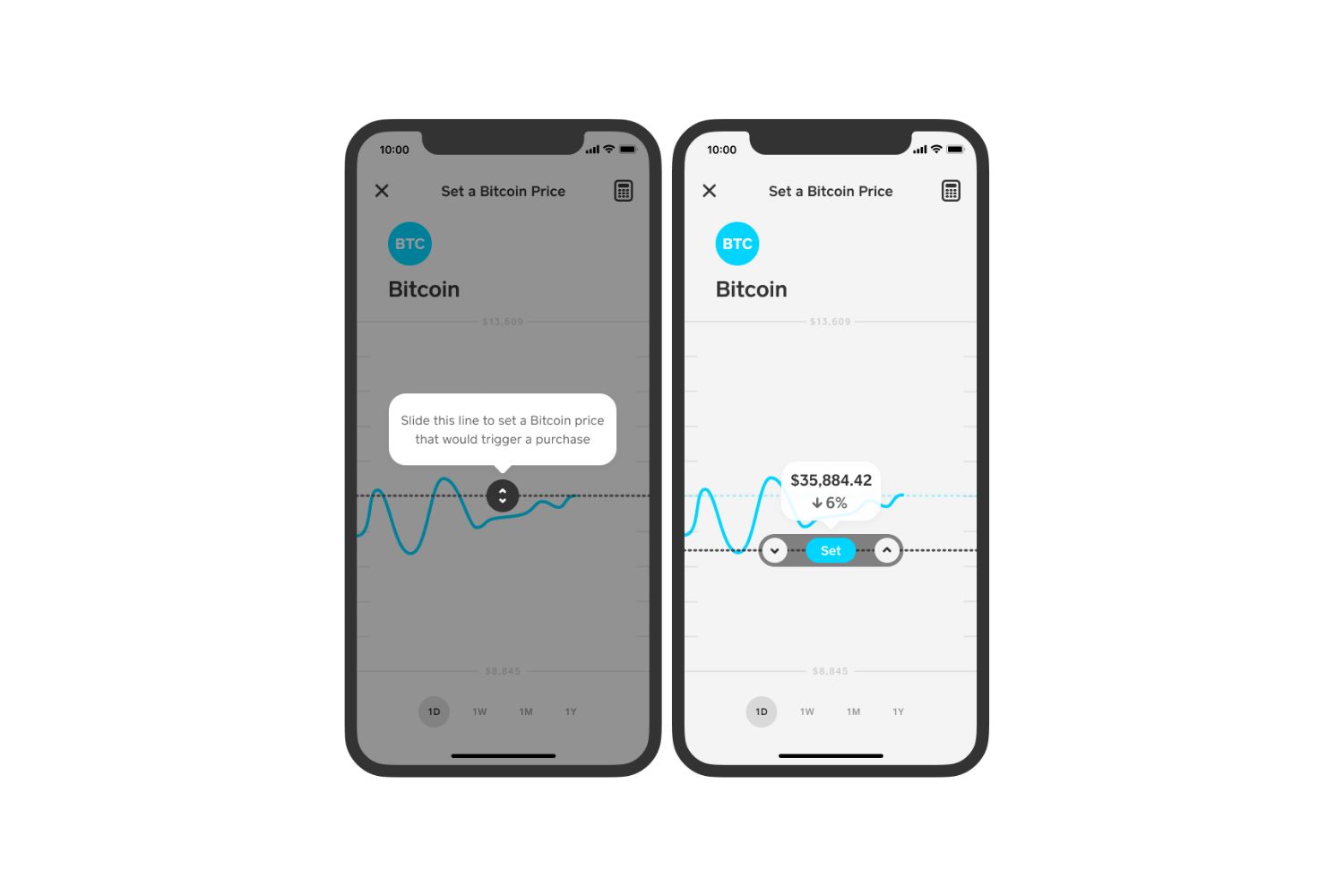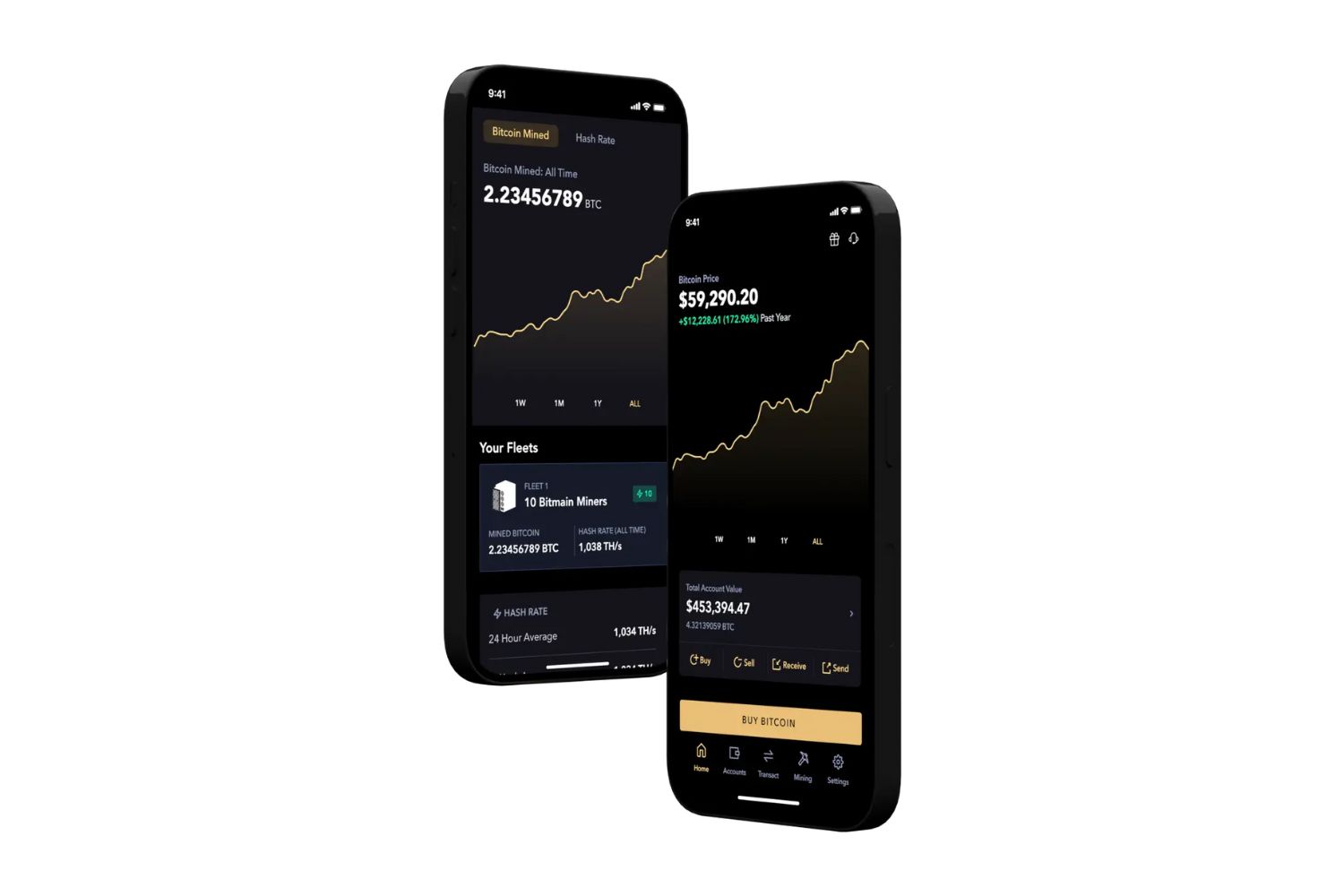Introduction
Bitcoin, the world’s most popular cryptocurrency, has captured the imagination of investors and traders around the globe. With its skyrocketing price in recent years, many individuals have wondered when the best time to buy Bitcoin might be. However, predicting the price of Bitcoin is no easy task, as it is influenced by various factors and subject to extreme price volatility.
Bitcoin was introduced in 2009 by an anonymous person or group of people known as Satoshi Nakamoto. It operates on a decentralized network, using blockchain technology to record and verify transactions. The limited supply of 21 million coins and its digital nature make it an attractive alternative to traditional fiat currencies.
The price of Bitcoin is primarily driven by supply and demand dynamics. The limited supply combined with increasing demand can lead to price surges, while market speculation and investor sentiment can cause dramatic price swings. It is essential to understand these factors and historical price trends to make informed decisions about buying Bitcoin.
Over the years, the price of Bitcoin has experienced significant fluctuations. In the early days, it was possible to acquire Bitcoins for just a few cents, while in 2017, it reached an all-time high of nearly $20,000. The subsequent year saw a steep decline, with prices dropping to around $3,000. Bitcoin’s price has since rebounded and witnessed immense growth in recent years.
Timing plays a crucial role in investing in Bitcoin. Buying during a bullish market can result in substantial profits, while buying during a bear market can lead to significant losses. Market timing strategies, such as dollar-cost averaging or utilizing technical analysis tools, aim to maximize gains and minimize risks.
Professional opinions on the best time to buy Bitcoin vary. Some experts suggest that buying during periods of market correction or consolidation can be advantageous, while others believe in taking a long-term approach and focusing on the fundamental value of Bitcoin. Ultimately, every investor should conduct thorough research, assess their risk tolerance, and make investment decisions based on their individual circumstances and goals.
In this article, we will explore the historical price trends of Bitcoin and analyze the factors affecting its price. We will also delve into different market timing strategies and examine professional opinions to uncover when the best time to buy Bitcoin might be. By understanding these aspects, readers will be better equipped to make informed decisions in the volatile and exciting world of Bitcoin investing.
What is Bitcoin?
Bitcoin is a decentralized digital currency that was invented in 2009 by an anonymous person or group of people using the name Satoshi Nakamoto. It operates on a peer-to-peer network, allowing users to send and receive payments directly without the need for intermediaries such as banks or governments. Bitcoin is based on blockchain technology, which serves as a public ledger to record all transactions.
One of the fundamental characteristics of Bitcoin is its limited supply. There will only ever be 21 million Bitcoins in existence, which makes it a scarce asset. This scarcity, combined with increasing demand, has contributed to the rising value of Bitcoin over time.
Bitcoin is often referred to as a cryptocurrency because it uses cryptographic techniques to secure transactions and control the creation of new units. These techniques ensure the integrity and security of the Bitcoin network, making it resistant to fraud and counterfeiting.
Unlike traditional fiat currencies, such as the US dollar or the Euro, Bitcoin is not issued or controlled by any central authority. Instead, it is governed by a decentralized network of computers around the world. This decentralized nature has several advantages, including increased transparency, reduced transaction costs, and protection against censorship and inflation.
Bitcoin transactions are conducted using Bitcoin addresses, which are a unique combination of numbers and letters. These addresses function similarly to bank account numbers, allowing users to send and receive Bitcoin securely. Each transaction is verified by network participants called miners, who use powerful computers to solve complex mathematical problems. Once a transaction is confirmed, it is added to a block on the blockchain, forming a permanent and immutable record.
Bitcoin’s digital nature and global accessibility have made it an attractive option for individuals seeking an alternative form of currency and store of value. It has gained popularity as a means of payment for goods and services, with an increasing number of businesses accepting Bitcoin as a form of payment.
In addition to its use as a currency, Bitcoin has also emerged as a speculative investment asset. Many investors and traders are drawn to its potential for high returns and diversification benefits. However, it is important to note that Bitcoin’s price can be highly volatile, and investing in it carries risks.
In summary, Bitcoin is a decentralized digital currency that operates on a peer-to-peer network. It offers the advantages of security, transparency, and accessibility while being free from the control of central authorities. Whether one views Bitcoin as a digital currency or an investment asset, it has undeniably had a profound impact on the financial world and continues to generate interest and excitement among both individuals and institutions.
Factors Affecting the Price of Bitcoin
The price of Bitcoin is influenced by numerous factors, ranging from market dynamics and investor sentiment to regulatory developments and technological advancements. Understanding these factors is crucial for anyone interested in investing in Bitcoin. Here are some of the key factors that affect the price of Bitcoin:
- Market Demand and Supply: Like any other asset, the price of Bitcoin is driven by the forces of supply and demand. When more people are buying Bitcoin than selling it, the price tends to rise. Conversely, when more people are selling Bitcoin than buying it, the price tends to fall. Changes in investor sentiment, economic conditions, and global events can all impact the market demand and supply of Bitcoin.
- Investor Sentiment: The perception of Bitcoin among investors is another significant factor that affects its price. Positive market sentiment and optimism about the future potential of Bitcoin can drive up demand, leading to an increase in price. On the other hand, negative sentiment, fear, or skepticism can result in a decrease in demand and a subsequent drop in price.
- Regulatory Environment: Regulations and government policies can have a profound impact on the price of Bitcoin. Positive regulatory developments, such as the recognition of Bitcoin as a legal form of payment or the establishment of clear guidelines for its use, can boost investor confidence and lead to an increase in price. Conversely, negative regulatory news or restrictions on Bitcoin’s use can dampen sentiment and cause a decline in its value.
- Technological Advancements: Technological advancements and improvements in the underlying blockchain technology can also influence the price of Bitcoin. For example, the implementation of scalability solutions, such as the Lightning Network, can enhance Bitcoin’s usability and potentially increase its demand and value. Similarly, developments in privacy features or security enhancements can impact the perception and adoption of Bitcoin.
- Halving Events: Bitcoin undergoes a programmed halving event approximately every four years. During a halving event, the rewards for Bitcoin miners are reduced by half, resulting in a decrease in the rate at which new Bitcoins are created. This reduction in supply, coupled with continued demand, has historically led to price increases. The most recent halving in May 2020 has sparked renewed interest and speculation about the future price of Bitcoin.
It is important to note that these factors are interconnected and can influence each other. For example, positive regulatory developments can bolster investor sentiment, leading to increased demand for Bitcoin. Similarly, technological advancements can drive demand and improve the overall perception of Bitcoin in the market. It is crucial for investors to stay informed and monitor these factors to navigate the dynamic nature of the Bitcoin market effectively.
Historical Price Trends
Bitcoin has exhibited significant price volatility since its inception, with periods of rapid growth, sharp declines, and prolonged periods of consolidation. Understanding the historical price trends can provide valuable insights into the potential future trajectory of Bitcoin’s price. Here are some key milestones and trends in Bitcoin’s price history:
- Early Days: When Bitcoin first emerged in 2009, it traded at a fraction of a cent. The price remained relatively stable for several years, with modest increases and occasional fluctuations. It wasn’t until 2013 that Bitcoin experienced its first significant price rally, reaching a peak of over $1,000. This surge was followed by a sharp decline and a prolonged period of consolidation.
- 2017 Bull Run: The year 2017 marked a breakthrough for Bitcoin as its price rocketed to new all-time highs. Fuelled by growing mainstream awareness and increasing institutional interest, Bitcoin reached an astonishing price of almost $20,000 in December 2017. However, this bull run was followed by a sharp correction, and Bitcoin’s price plunged to around $3,000 by the end of 2018.
- 2018-2020 Consolidation: After the 2017 bull run, Bitcoin entered a phase of prolonged consolidation, with prices fluctuating within a relatively narrow range. This period, often referred to as the “crypto winter,” tested the resilience of Bitcoin investors and the overall cryptocurrency market. It wasn’t until early 2020 that Bitcoin began to show signs of renewed bullishness.
- 2020 Bitcoin Halving: One of the most highly anticipated events in the Bitcoin community is the halving, which occurs approximately every four years. The most recent halving took place in May 2020, reducing the block reward from 12.5 to 6.25 Bitcoins. In the months leading up to and following the halving, Bitcoin’s price experienced substantial volatility. Many analysts and enthusiasts believe that the halving played a role in driving the subsequent price increase.
While past performance is not indicative of future results, analyzing historical price trends can offer insights into potential patterns and cycles. It is important to note that Bitcoin’s price can be influenced by various factors, including market sentiment, regulatory developments, and macroeconomic conditions. Therefore, it is essential to consider these factors alongside historical trends when making investment decisions.
As with any investment, it is crucial to conduct thorough research, assess risk tolerance, and use discretion when entering and exiting positions. Bitcoin’s price history demonstrates the potential for significant gains but also highlights the volatility and risks associated with the cryptocurrency market. By staying informed and keeping a long-term perspective, investors can navigate the unpredictable nature of Bitcoin and potentially benefit from its future growth and adoption.
Buying Bitcoin in the Early Days
In the early days of Bitcoin, when it was first introduced in 2009, the cryptocurrency was relatively unknown and had little to no value. During this time, buying Bitcoin was a relatively simple and inexpensive process compared to the current market. In fact, some early adopters were able to acquire significant amounts of Bitcoin for just a few cents or even less.
The primary method of acquiring Bitcoin in the early days was through mining. Mining involves using computational power to solve complex mathematical problems, and in return, miners are rewarded with newly created Bitcoins. In the early years, mining Bitcoin could be done using standard personal computers or laptops, as the network difficulty was much lower. Miners were able to generate a considerable number of Bitcoins with minimal setup costs.
In addition to mining, individuals could acquire Bitcoin through peer-to-peer transactions or by participating in online forums and communities. Many early adopters were passionate about the concept of a decentralized digital currency and were willing to exchange Bitcoin for goods, services, or even other digital assets. These early transactions were often conducted in informal settings, and trust and reputation played a crucial role.
However, it’s important to note that during these early days, Bitcoin’s value was highly speculative and volatile. The price of Bitcoin was largely driven by the enthusiasm and curiosity of early adopters, resulting in dramatic price fluctuations. As awareness of Bitcoin grew and more individuals became interested in acquiring the cryptocurrency, the price began to experience significant upward momentum.
As Bitcoin gained traction and its price started to rise, exchanges began to emerge, providing a more structured platform for trading and buying Bitcoin. These exchanges allowed users to convert fiat currencies into Bitcoin, opening up opportunities for a wider audience to participate in the cryptocurrency market. These exchanges provided liquidity and facilitated the buying and selling of Bitcoin at prevailing market prices.
Looking back, those who were fortunate enough to acquire Bitcoin in the early days have seen their investments grow exponentially in value. Today, Bitcoin is widely recognized as a legitimate form of digital currency and has gained attention from institutional investors, governments, and everyday individuals. The process of buying Bitcoin has become more streamlined and accessible, with numerous regulated exchanges and platforms available to purchase the cryptocurrency.
While the opportunity to acquire Bitcoin at a fraction of a cent is long gone, the continued growth and adoption of Bitcoin suggest that there may still be potential for significant price appreciation in the future. Investing in Bitcoin today requires taking into account market volatility, conducting thorough research, and considering individual risk tolerance. However, the early days of Bitcoin serve as a reminder of the transformative potential of cryptocurrencies and the opportunities that can arise from being an early adopter.
The Bitcoin Boom in 2017
2017 was a monumental year for Bitcoin as it experienced an unprecedented price surge, propelling the cryptocurrency into the global spotlight. Bitcoin’s meteoric rise captivated the attention of mainstream media, investors, and the general public, leading to a frenzy of activity in the cryptocurrency market.
The year began with Bitcoin trading at around $1,000, but over the course of 2017, its price skyrocketed to nearly $20,000 by December. This exponential growth was primarily fueled by a combination of factors, including increased mainstream adoption, positive sentiment, and speculation by investors looking for quick profits.
One of the key drivers of the 2017 Bitcoin boom was growing awareness and acceptance of cryptocurrencies in general. Major financial institutions and companies started to show interest and explore the potential of blockchain technology, the underlying technology behind Bitcoin. This heightened interest from established players lent credibility to Bitcoin, attracting both retail and institutional investors.
The media played a significant role in fueling the Bitcoin boom of 2017. Mainstream news outlets began covering Bitcoin extensively, highlighting its astonishing price surge and showcasing stories of early adopters who had become millionaires. This extensive media coverage generated curiosity and FOMO (fear of missing out) among potential investors, leading to a surge in demand.
Investors seeking high returns were drawn to Bitcoin as its price continued to surge. Many believed that Bitcoin represented a new digital gold or a store of value in an increasingly digitized world. The fear of missing out on potential profits created a self-perpetuating cycle, with more investors entering the market, driving prices even higher.
The Bitcoin boom in 2017 also saw the emergence of initial coin offerings (ICOs), a fundraising method in which new cryptocurrencies were created and sold to investors. These ICOs attracted significant attention and investment, adding fuel to the already bullish sentiment surrounding Bitcoin and cryptocurrencies as a whole.
However, the rapid price increase in Bitcoin during 2017 prompted concerns about a potential bubble. Skeptics and critics argued that the fundamentals of Bitcoin did not justify its soaring price and that the surge was driven mainly by speculation. As the end of 2017 approached, the cryptocurrency market experienced a sharp correction, with Bitcoin’s price dropping by more than 80% from its peak, leading to a period of prolonged bearishness often referred to as the “crypto winter.”
Though the 2017 Bitcoin boom ended in a sharp downturn, it marked a significant milestone in the cryptocurrency ecosystem. The attention and investment it generated paved the way for increased market infrastructure, improved regulation, and broader adoption of cryptocurrencies in the years that followed. It also served as a reminder of the volatility and speculative nature of the cryptocurrency market, emphasizing the importance of careful research and risk management for investors.
Bitcoin’s Volatility in 2018
After the remarkable price surge of 2017, Bitcoin experienced a sharp reversal in 2018, characterized by extreme volatility and a significant decline in price. The cryptocurrency market witnessed a period of correction, as the euphoria surrounding Bitcoin gave way to a more cautious and skeptical sentiment among investors.
In the first few months of 2018, Bitcoin’s price continued to decline, reaching a low of around $3,000 by December. The market correction of 2018 demonstrated the volatile nature of cryptocurrencies and served as a reality check for those who had witnessed the unprecedented rise of Bitcoin just a year earlier.
Several factors contributed to Bitcoin’s volatility in 2018. One significant factor was the regulatory crackdown on cryptocurrencies and initial coin offerings (ICOs) by various governments around the world. Concerns over money laundering, fraud, and market manipulation led regulators to implement stricter measures and guidelines, dampening investor enthusiasm.
Additionally, the bursting of the Bitcoin bubble in 2018 resulted in a loss of confidence among investors, leading to a significant outflow of capital from the cryptocurrency market. Many investors who had bought Bitcoin at the peak of the price rally started to sell their holdings, pushing prices down further.
The increasing competition from other cryptocurrencies also contributed to Bitcoin’s volatility in 2018. As more alternative cryptocurrencies, commonly known as altcoins, gained prominence, investors started diversifying their portfolios and exploring other investment opportunities. This increased competition led to a fragmentation of the cryptocurrency market, with the total market capitalization being distributed across a broader range of digital assets.
Furthermore, the lack of institutional infrastructure and regulatory clarity added to the uncertainty surrounding Bitcoin. Financial institutions and traditional investors were cautious about entering the cryptocurrency market due to concerns about security, custody, and compliance. The absence of well-established cryptocurrency exchanges and custodial services limited participation and contributed to market instability.
The extreme price volatility in 2018 also highlighted the speculative nature of the cryptocurrency market. With limited fundamental analysis tools and historical data, valuing cryptocurrencies purely based on their potential future utility proved challenging. As a result, price movements were often driven by market sentiment, news, and speculative trading strategies.
Despite the turbulent market conditions of 2018, it is important to note that Bitcoin’s fundamentals remained intact. The underlying blockchain technology continued to evolve, and the network displayed resilience amidst the market downturn. Many cryptocurrency enthusiasts and long-term investors viewed the price declines as a necessary correction and an opportunity to accumulate Bitcoin at more favorable prices.
The volatility experienced in 2018 served as a crucial lesson for market participants, emphasizing the need for risk management and a long-term perspective when investing in cryptocurrencies. It also prompted the cryptocurrency community to focus on improving infrastructure, addressing regulatory concerns, and building investor confidence in the market.
The 2020 Bitcoin Halving
One of the most highly anticipated events in the Bitcoin community is the halving, which occurs approximately every four years. In May 2020, Bitcoin underwent its third halving since its inception, marking a significant milestone in the cryptocurrency’s history. The halving event, also known as the “halvening,” involves reducing the block reward given to Bitcoin miners by half, resulting in a decreased rate of new Bitcoin creation.
The purpose of the halving is to control inflation and ensure the scarcity of Bitcoin over time. By reducing the rate at which new Bitcoins are issued, the halving gradually diminishes the available supply, in line with the pre-programmed limit of 21 million coins. This mechanism is one of Bitcoin’s unique features that sets it apart from traditional fiat currencies.
The 2020 Bitcoin halving witnessed a high level of anticipation and speculation among investors and enthusiasts. Leading up to the halving, there was increased market activity, as many individuals and institutions sought to position themselves for potential price increases.
The halving event sparked debates and predictions about the impact it would have on the price of Bitcoin. Some analysts and investors believed that the reduction in the rate of new Bitcoin creation would lead to a supply shortage, driving up demand and subsequently increasing the price. Others remained more skeptical, emphasizing the efficient market hypothesis and arguing that the halving was already priced in by the market.
In the months following the halving, Bitcoin’s price displayed increased volatility. Initially, there was a modest price increase, followed by a period of consolidation. However, as the year unfolded, Bitcoin experienced a significant rally, surpassing its previous all-time high from 2017.
The 2020 Bitcoin halving served as a catalyst for renewed interest and excitement in the cryptocurrency market. It brought attention to Bitcoin’s scarcity and the soundness of its monetary policy. The event also highlighted the continued growth and maturation of the cryptocurrency ecosystem, attracting attention from institutional investors and traditional financial institutions.
However, it is important to note that while the halving had an impact on Bitcoin’s price, it was not the sole determinant. Other factors, such as macroeconomic conditions, investor sentiment, regulatory developments, and market dynamics, also played significant roles in shaping Bitcoin’s price trajectory.
The 2020 halving reinforced the long-term investment thesis for Bitcoin, with proponents believing that its scarcity and increasing adoption will ultimately lead to higher prices in the future. However, it is essential for investors to approach Bitcoin and other cryptocurrencies with caution, considering the inherent volatility and unpredictability of the market.
As with any investment, it is important to conduct thorough research, consider risk tolerance, and diversify one’s portfolio. The 2020 Bitcoin halving underscored the unique properties of Bitcoin and the potential for price appreciation, but prudent investment strategies should always be based on comprehensive analysis and a long-term perspective.
Market Timing Strategies
Timing is a critical factor when it comes to buying and selling Bitcoin. The volatile nature of the cryptocurrency market makes it challenging to predict short-term price movements accurately. However, investors can employ various timing strategies to maximize potential returns and minimize risks. Here are a few popular market timing strategies used by Bitcoin investors:
- Dollar-Cost Averaging (DCA): DCA is a strategy where investors allocate a fixed amount of money to purchase Bitcoin at regular intervals, regardless of its price. By consistently buying Bitcoin over time, regardless of market conditions, investors can average out their entry prices and potentially benefit from lower prices during market downturns.
- Technical Analysis: Technical analysis involves analyzing historical price patterns, trends, and indicators to predict future price movements. Traders who employ technical analysis use various tools, such as moving averages, chart patterns, and oscillators, to identify potential buying or selling opportunities. However, it’s important to note that technical analysis is not foolproof, and price movements can be influenced by other factors beyond pure technical analysis.
- Breakout Trading: Breakout trading involves identifying key support and resistance levels in the price chart and making trades when the price breaks out of these levels. Traders who use breakout trading strategies aim to capitalize on significant price movements that occur after an extended period of consolidation or when the price exceeds a well-established price range.
- Market Sentiment Analysis: Market sentiment analysis involves assessing the overall sentiment and mood of the cryptocurrency market. This can be done by monitoring social media channels, news outlets, and online forums to gauge the prevailing sentiment among investors. By aligning with market sentiment, investors can make more informed decisions about buying or selling Bitcoin.
It is worth noting that market timing strategies come with inherent risks. Even the most sophisticated timing strategies can be hindered by unexpected market events or sudden price fluctuations. Timing the market accurately on a consistent basis is extremely challenging, and attempting to do so can lead to costly mistakes.
Long-term investors often adopt strategies that focus on the fundamental value of Bitcoin rather than short-term price fluctuations. They base their investment decisions on factors such as Bitcoin’s potential as a store of value, its adoption rate, and its ability to disrupt traditional financial systems. These investors believe in the long-term potential of Bitcoin and are less concerned about short-term price volatility.
As with any investment strategy, it is essential to conduct thorough research, set clear investment goals, and diversify one’s portfolio. Market timing strategies should be tailored to an investor’s risk tolerance, investment horizon, and individual circumstances. Regularly monitoring and adjusting the strategy based on market conditions and new information is crucial to adapt to an ever-changing market landscape.
Regardless of the strategy employed, it is important to approach Bitcoin investment with caution and understand that investing in cryptocurrencies carries inherent risks. The cryptocurrency market is highly volatile, and prices can fluctuate dramatically in a short period. Therefore, investors should carefully consider their own risk tolerance and seek professional advice before making any investment decisions.
Professional Opinions on the Best Time to Buy Bitcoin
When it comes to determining the best time to buy Bitcoin, professional opinions vary widely. Some experts believe that attempting to time the market perfectly is an exercise in futility, given the inherent volatility of cryptocurrencies. Instead, they advocate for a long-term investment approach and emphasize the importance of fundamental analysis and understanding the underlying value of Bitcoin.
Others suggest that buying during periods of market correction or consolidation can present attractive opportunities. They argue that entering the market when prices have retreated from previous highs may offer more favorable entry points. These professionals focus on identifying key support levels and utilizing technical analysis tools to time their entry.
Some experts also highlight the significance of market sentiment in determining the optimal time to buy Bitcoin. They believe that tracking the overall market mood and investor sentiment can provide valuable insights. Market sentiment analysis involves monitoring social media channels, news outlets, and online forums to gauge the prevailing sentiment among investors. By aligning with overall market sentiment, investors can potentially make more informed decisions.
Several prominent investors and institutions have publicized their opinions on Bitcoin. Some high-profile investors, such as Paul Tudor Jones and Stanley Druckenmiller, have expressed their bullishness on Bitcoin as a hedge against inflation and an alternative store of value to traditional assets like gold.
In contrast, skeptics like Warren Buffett and Charlie Munger have voiced their concerns about Bitcoin’s lack of intrinsic value and warned about the potential risks associated with cryptocurrencies. These skeptics caution against investing in Bitcoin based solely on speculative price appreciation and recommend approaching the market with caution.
It is important to note that professional opinions should be considered alongside an individual’s own research and risk tolerance. Investing in Bitcoin or any other cryptocurrency carries inherent risks, and investors should only invest what they can afford to lose. It is crucial to conduct thorough research, diversify one’s investment portfolio, and consider seeking professional advice before making any investment decisions.
Regardless of professional opinions, it remains paramount for investors to stay informed about market developments, monitor regulatory changes, and understand the technological landscape of cryptocurrencies. By staying abreast of industry trends and conducting due diligence, investors can make more informed decisions and navigate the ever-evolving cryptocurrency market.
Ultimately, the best time to buy Bitcoin may differ for each individual, depending on personal circumstances, risk appetite, and investment goals. It is crucial to assess one’s own financial situation and conduct thorough research before making any investment decisions. Whether an investor chooses to time the market, adopt a long-term approach, or a combination of strategies, it is important to approach Bitcoin investment with an understanding of the inherent risks and potential rewards associated with this emerging asset class.
Conclusion
Bitcoin, as the world’s leading cryptocurrency, continues to draw the attention of investors and traders around the globe. Timing the market to buy Bitcoin at the optimal price is a challenge due to the cryptocurrency’s extreme price volatility and the multitude of factors influencing its value.
Understanding the fundamentals of Bitcoin, such as its limited supply and decentralized nature, is crucial to making informed investment decisions. Factors such as market demand and supply, investor sentiment, regulatory developments, and technological advancements play significant roles in shaping Bitcoin’s price trajectory.
While professional opinions on the best time to buy Bitcoin may differ, certain strategies can be employed to mitigate risks and maximize potential returns. Tactics such as dollar-cost averaging, technical analysis, breakout trading, and market sentiment analysis are popular among investors. However, it is essential to exercise caution and tailor these strategies to individual risk tolerance, investment goals, and time horizons.
The historical price trends of Bitcoin highlight its incredible growth since its inception, punctuated by periods of exponential surges and sharp corrections. The 2020 Bitcoin halving event and the volatility experienced in 2018 demonstrate the unique characteristics and challenges of investing in Bitcoin.
It is important to note that investing in Bitcoin and other cryptocurrencies carries inherent risks. It is crucial for investors to conduct thorough research, diversify their portfolios, and approach the market with a clear understanding of the risks involved. Prudent decision-making, careful risk management, and a long-term perspective are key to navigating the cryptocurrency market successfully.
As the cryptocurrency ecosystem continues to evolve and mature, it is important for investors to stay informed about market developments, regulatory changes, and technological advancements. By remaining vigilant and adaptable, investors can position themselves to take advantage of potential opportunities in the ever-evolving world of Bitcoin investing.
In summary, investing in Bitcoin requires a thorough understanding of the cryptocurrency, careful analysis of market dynamics, and consideration of individual risk tolerance and investment objectives. While timing the market perfectly may be challenging, investors can adopt various strategies to navigate the volatile nature of Bitcoin and potentially capitalize on its long-term growth prospects.

























